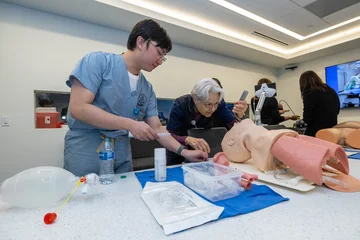trial results from checkpoint blockade for melanoma patients with prior PD1/PDL1
Trial results from Ipilimumab with or without Nivolumab melanoma patients progressing from prior PD1

Results from SWOG S1616 Clinical Trial:
In this randomised phase 2 trial, blockade of cytotoxic T lymphocyte antigen-4 (CTLA-4) with continuation of programmed death receptor 1 (PD-1) blockade in patients with metastatic melanoma who had received front-line anti-PD-1/L1 therapy and whose tumours progressed was tested in comparison with CTLA-4 blockade alone. Ninety-two eligible patients were randomly assigned in a 3:1 ratio to receive the combination of the ipilimumab and nivolumab, or ipilimumab alone. The primary endpoint was progression-free survival (PFS). Secondary endpoints included difference in CD8 T cell infiltrate among responding and non-responding tumours, objective response rate (ORR), overall survival (OS) and toxicity. The combination of nivolumab and ipilimumab resulted in a statistically significant improvement in PFS over ipilimumab (hazard ratio of 0.63, 90% CI 0.41, 0.97, one-sided p-value of 0.04). Objective response rates were 28% (90% CI: 19%, 38%) and 9% (90% CI: 2%, 25%), respectively (one-sided p-value of 0.05). Treatment-related adverse events of grade 3 or higher occurred in 57% and in 35%, respectively, consistent with the known toxicity profile of these regimens. The change in intratumoural CD8 T cell density observed in the present analysis did not reach statistical significance to support the formal hypothesis tested as a secondary endpoint. In conclusion, primary resistance to PD-1 blockade therapy can be reversed in some patients with the combination of CTLA-4 and PD-1 blockade.



